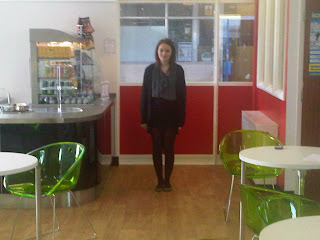1. Definition for 'continuity' in the media context
http://www.allbusiness.com/glossaries/continuity/4948953-1.html
2.
Continuity:Contiunity is when there is an outstanding theme throughout a advertisment or piece of advertising.
3. Definition for 180 degree rule
http://www.mediacollege.com/video/editing/transition/reverse-cut.html
180 degree rule/ Crossing the line: This is when you have to keep the camera within the field of 180 degrees. This is also called crossing the line this is when if you are filming on one side of the actor you cant cross over the line that goes through them you can only move left and right.
Definiton for Shot reverse shot
http://dictionary.infoplease.com/reverse-shot
Shot reverse shot : Shot reverse shot is when one character is looking at either another character or off screen, and the the other character is shown looking back at the character just shown, this will look like they are facing eachother.
Definition for Match on action
www.waikato.ac.nz/film/handbook/glossary.html
Definition for Match on action: Connects two shots cut together by having a character finish an action in the second shot begun in the first shot. For instance, if a character lights a match in the first shot, the same
character will draw it up to a cigarette in the second.
3. Here is a scan of my work displaying the 180 degree rule/ crossing the line, and shot reverse shot


































